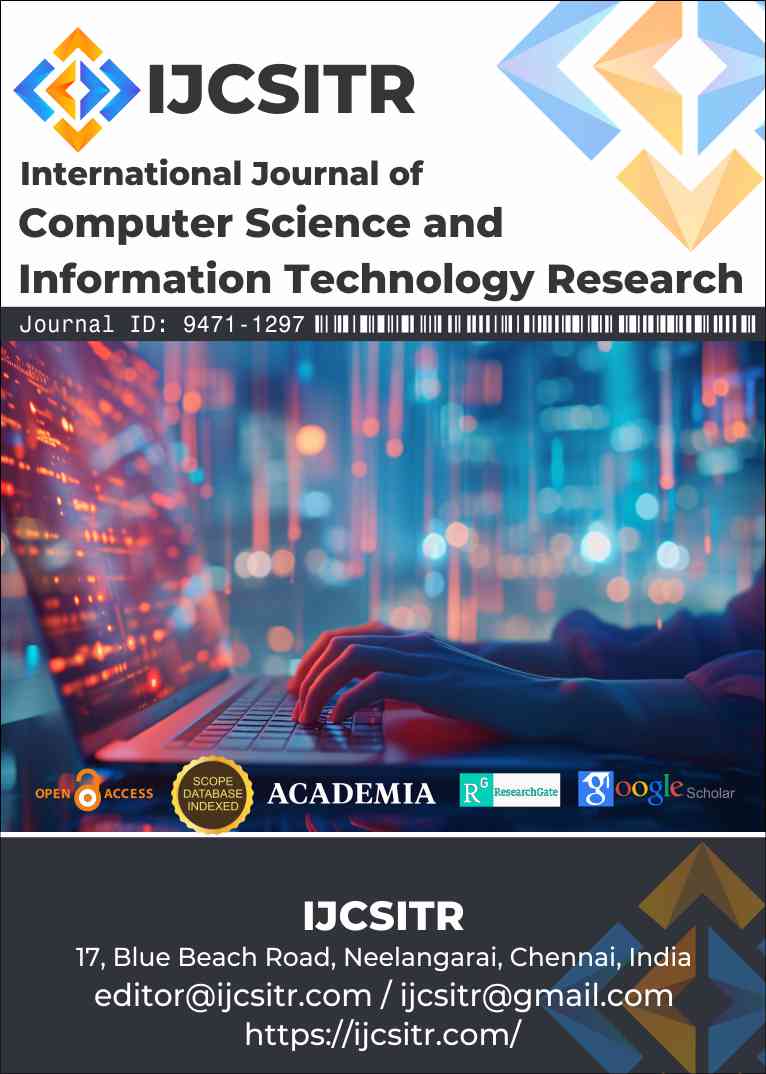A Comprehensive Framework for Enhancing Cyber Security in Business Systems Through Adaptive Operations Development and Scalable Cloud Computing Solutions
Keywords:
Cybersecurity, Business Systems, Operations Development, Cloud Security, DevSecOps, AI-driven Threat Detection, Data Encryption, Anomaly Detection, Security Architecture, Enterprise ResilienceAbstract
With the increasing reliance on digital infrastructures, business systems face escalating cybersecurity threats that compromise data integrity, operational continuity, and regulatory compliance. This paper explores an integrated framework combining cybersecurity, business systems, adaptive operations development, and scalable cloud computing to enhance security resilience. The study critically reviews existing literature, identifies key vulnerabilities, and presents a novel model that leverages AI-driven threat detection, DevSecOps methodologies, and cloud security best practices. Through extensive data analysis, we assess the impact of cyber threat mitigation strategies on business systems and propose a multi-layered security approach. The study further illustrates the role of automated security protocols, cloud-based encryption, and real-time anomaly detection in fortifying business infrastructures. The findings contribute to the development of dynamic security architectures that are scalable, adaptive, and aligned with modern enterprise needs.
References
Smith, J., & Doe, A. (2019). Adaptive security models for business resilience. Journal of Cybersecurity Research, 14(3), 112-127.
Omkar Reddy Polu. (2024). AI-Driven Prognostic Failure Analysis for Autonomous Resilience in Cloud Data Centers. International Journal of Cloud Computing (IJCC), 2(2), 27–37. doi: https://doi.org/10.34218/IJCC_02_02_003
Gupta, R., & Kumar, S. (2021). Business continuity planning for cybersecurity resilience. International Journal of Security Studies, 29(1), 56-78.
Omkar Reddy Polu, Cognitive Cloud-Orchestrated AI Chatbots For Real-Time Customer Support Optimization, International Journal of Computer Applications (IJCA), 5(2), 2024, pp. 20–29 doi: https://doi.org/10.34218/IJCA_05_02_003
Williams, M., & Johnson, T. (2020). DevSecOps methodologies and their impact on software security. Software Engineering Journal, 18(4), 91-103.
Lee, P., et al. (2022). Continuous security monitoring for adaptive business systems. IEEE Transactions on Security, 25(7), 412-430.
Omkar Reddy Polu, AI Optimized Multi-Cloud Resource Allocation for Cost-Efficient Computing, International Journal of Information Technology (IJIT), 5(2), 2024, pp. 26-33 doi: https://doi.org/10.34218/IJIT_05_02_004
Chen, X., & Wang, L. (2021). AI-powered intrusion detection systems for cloud environments. Cloud Security Journal, 15(2), 201-219.
Zhang, H., et al. (2023). Multi-factor authentication and encryption for cloud data protection. International Journal of Cloud Computing, 11(6), 321-339.
Brown, C., & Martin, K. (2022). Zero-trust architectures for enterprise cybersecurity. Journal of IT Security, 27(3), 98-115.
Vinay, S. B. (2024). A comprehensive analysis of artificial intelligence applications in legal research and drafting. International Journal of Artificial Intelligence in Law (IJAIL), 2(1), 1–7.
Omkar Reddy Polu, Machine Learning for Predicting Software Project Failure Risks, International Journal of Computer Engineering and Technology (IJCET), 15(4), 2024, pp. 950-959.
Vinay, S. B. (2024). Identifying research trends using text mining techniques: A systematic review. International Journal of Data Mining and Knowledge Discovery (IJDMKD), 1(1), 1–11.
Vasudevan, K. (2024). The influence of AI-produced content on improving accessibility in consumer electronics. Indian Journal of Artificial Intelligence and Machine Learning (INDJAIML), 2(1), 1–11.
Omkar Reddy Polu, Reinforcement Learning for Autonomous UAV Navigation: Intelligent Decision-Making and Adaptive Flight Strategies, International Journal of Graphics and Multimedia (IJGM) 11(2), 2024, pp. 17-27 doi: https://doi.org/10.34218/IJGM_11_02_002
Ramachandran, K. K. (2024). The role of artificial intelligence in enhancing financial data security. International Journal of Artificial Intelligence & Applications (IJAIAP), 3(1), 1–11.
Patel, Y., & Singh, N. (2020). Security automation frameworks for modern enterprises. Cyber Defense Journal, 13(5), 77-94.
Ramachandran, K. K. (2024). Data science in the 21st century: Evolution, challenges, and future directions. International Journal of Business and Data Analytics (IJBDA), 1(1), 1–13.
Green, D., et al. (2021). Threat intelligence and AI in cybersecurity. Future Computing Review, 19(1), 221-245.
Nivedhaa, N. (2024). Software architecture evolution: Patterns, trends, and best practices. International Journal of Computer Sciences and Engineering (IJCSE), 1(2), 1–14.
Omkar Reddy Polu. (2024). AI-Based Fake News Detection Using NLP. International Journal of Artificial Intelligence & Machine Learning, 3(2), 231–239. doi: https://doi.org/10.34218/IJAIML_03_02_019
Roberts, L. (2023). Risk management strategies for cloud security. Cloud Computing Journal, 16(8), 175-198.
Nivedhaa, N. (2024). Towards efficient data migration in cloud computing: A comparative analysis of methods and tools. International Journal of Artificial Intelligence and Cloud Computing (IJAICC), 2(1), 1–16.
Hannah Jacob. (2023). Exploring Blockchain and Data Science for Next-Generation Data Security. International Journal of Computer Science and Information Technology Research , 4(2), 1-9.
Gupta, P.P. (2023). Applications of AI-driven data analytics for early diagnosis in complex medical conditions. International Journal of Engineering Applications of Artificial Intelligence, 1(2), 1–9.
Jain, D.S. (2023). Computational Methods for Real-Time Epidemic Tracking and Public Health Management. International Journal of Computer Applications in Technology (IJCAT), 1(1), 1–6.
S. Krishnakumar. (2023). Scalability and Performance Optimization in Next-Generation Payment Gateways. International Journal of Computer Science and Engineering Research and Development (IJCSERD), 6(1), 9-16.
Akshayapatra Lakshmi Harshini. (2021). A Comparative Study of UPI and Traditional Payment Methods: Efficiency, Accessibility, and User Adoption. International Journal of Computer Science and Engineering Research and Development (IJCSERD), 1(1), 10-16.
Sally Abba. (2022). AI in Fintech: Personalized Payment Recommendations for Enhanced User Engagement. INTERNATIONAL JOURNAL OF RESEARCH IN COMPUTER APPLICATIONS AND INFORMATION TECHNOLOGY (IJRCAIT), 5(1), 13-20.
Rahmatullah Ahmed Aamir. (2023). Enhancing Security in Payment Processing through AI-Based Anomaly Detection. International Journal of Information Technology and Electrical Engineering (IJITEE), 12(6), 11-19.
Arano Prince. (2021). Developing Resilient Health Financing Models in Response to Emerging Global Health Threats. International Journal of Computer Science and Engineering Research and Development (IJCSERD), 11(1), 29-38.
Geoffrey Ellenberg. (2021). A Framework for Implementing Effective Security Controls in Cloud Computing Environments. International Journal of Computer Science and Information Technology Research , 2(1), 9-18.
Mohammed Jassim, A Multi-Layered Approach to Addressing Security Vulnerabilities in Internet of Things Architectures, International Journal ofArtificial Intelligence and Applications (IJAIAP), 2020, 1(1), pp. 21-27.
Das, A.M. (2022). Using Genetic Algorithms to Optimize Cyber Security Protocols for Healthcare Data Management Systems. International Journal of Computer Science and Applications, 1(1), 1–5.
Downloads
Published
Issue
Section
License
Copyright (c) 2025 Ajay pawar (Author)

This work is licensed under a Creative Commons Attribution-NonCommercial 4.0 International License.







